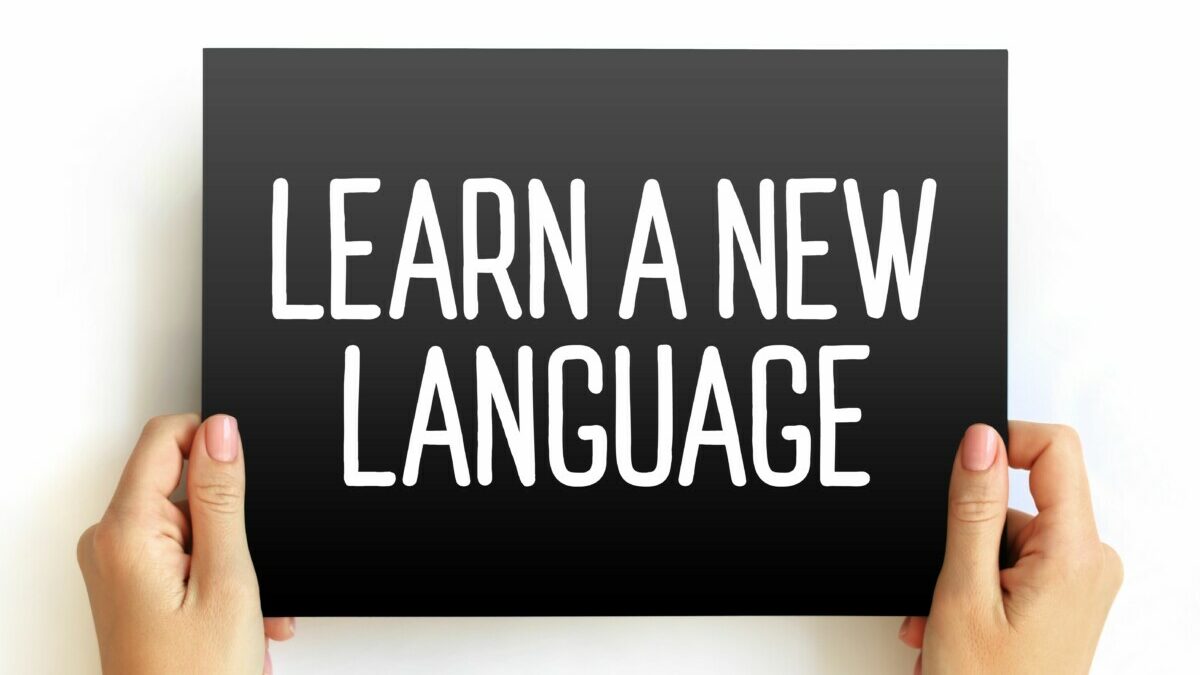
There are so many different options available when it comes to learning a new language. From in-person class lessons, online classes, different computer programs, and even visiting a country that speaks the language, are phone apps, specifically Duolingo, the most effective option?
Duolingo’s effectiveness is heavily determined by the level of knowledge one is starting at. Those who are just starting to learn the language will find it much more effective, while those who are somewhat knowledgeable will find the app to be much less effective.
So, you know know that Duolingo is somewhat effective, but only to a certain point, however, this doesn’t tell you all of the stories. Throughout the rest of this article, I will go over some of the statistics that show how Duolingo is great for early learners and how it eventually slows in effectiveness. Then I will cover the languages Duolingo offers, and how it compares to other learning methods like in-person classes, and other language learning programs.
Can You Learn Languages With Duolingo?
The short answer to this question is yes, Duolingo does help you learn a language. However, if you’re expecting Duolingo to full master in the language then you are likely going to find that it comes up a bit short. All that having been said, it is still extremely useful. There are many different studies that show if you do use Duolingo you will be able to learn a language, which we’ll go over now.
In Duolingo’s end-of-year report from 2012, the report went over how effective the app was a teaching users a language. They compared their results to how well a student would test after taking a number of semesters of studying said language, with a score of 270 being what you can expect after one semester. After allowing the test subjects to study for several weeks however much they wanted, all of them then took the test to see how much they improved and that was divided by the total number of hours that they studied.
Once the result came in, it was found that the majority of users had their scores improved by 5.2 points for every hour they spent studying using Duolingo. The lower 25% only saw a 1.1-point improvement per hour, but looking at the high end some people saw a growth of 60.4 points per hour they studied.
Another study performed by TRANS Internet-Zeitschrift für Kulturwissenschaften also found similar results. However, instead of talking about those results, they also asked participants how they felt that Duolingo help helped them. When asked how many of them were satisfied with Duolingo, 76% of participants stated that they agreed that Duolingo helped them or they strongly agreed. A very similar result was found when the same participants were asked if Duolingo helped them learn grammar and vocabulary.
The last question I will cover from this study was if the participants enjoyed learning grammar and vocabulary with Duolingo, and on this one 70% of participants agreed or strongly agreed.
Languages Duolingo Offers

When it comes to the languages offered, to have the largest selection you will want to be an English speaker. However, there are 28 different languages that Duolingo is able to use while teaching courses. To find and see if your native language is one of the available ones, simply go to Duolingo.com and click on the “I speak X language” option and you will see all of the offered course languages.
For those who do speak English, you are going to have 39 different options of languages you are going to want to learn. These languages are:
- Spanish which has 31.3M learners
- French which has 18.8M learners
- Japanese which has 13.0M learners
- German which has11.0M learners
- Korean which has 10.9M learners
- Hindi which has 7.63M learners
- Italian which has 7.42M learners
- Chinese which has5.96M learners
- Russian which has 5.24M learners
- Arabic which has 4.08M learners
- Turkish which has 2.95M learners
- Portuguese which has 2.89M learners
- Dutch which has 1.90M learners
- Vietnamese which has 1.79M learners
- Greek which has 1.53M learners
- Swedish which has 1.48M learners
- Latin which has 1.48M learners
- Polish which has 1.46M learners
- Ukrainian which has 1.44M learners
- Irish which has 1.36M learners
- Norwegian (Bokmål) which has 1.16M learners
- Hebrew which has 993K learners
- Indonesian which has 779K learners
- High Valyrian which has 727K learners
- Danish which has 666K learners
- Finnish which has 650K learners
- Romanian which has 615K learners
- Hawaiian which has 610K learners
- Czech which has 569K learners
- Welsh which has 540K learners
- Scottish Gaelic which has 447K learners
- Swahili which has 444K learners
- Hungarian which has 422K learners (Hungarian is still in Beta)
- Haitian Creole which has 396K learners (Haitian Creole is still in Beta
- Klingon which has 303K learners (Klingon is still in Beta)
- Esperanto which has 299K learners
- Navajo which has 284K learners (Navajo is still in Beta)
- Yiddish which has 283K learners (Yiddish is still in Beta)
- Zulu which has 115K learners
- Duolingo is currently creating classes for Xhosa
How Duoling Teaches Languages

So, you can see that there are tons of different language options to choose from, with the vast majority of the being actually languages, although there are a few fictional languages including High Valyrian and Klingon. But, once you choose your language, how does the app actually teach you to speak, write, and understand the language of your choice?
Well, first you are going to want to select how much you are going to want to study each day. The options you are going to have for how much you will study each day are:
- Casual– 5 minutes each day
- Regular– 10 minutes each day
- Serious– 15 Minutes each day
- Intense– 20 minutes each day
While these are the option you have, you can always study more than what you originally selected. This will also set reminders to help you remember to study each day as one of the most important aspects of learning a language is to practice and study every day.
After doing this, you will take a quick quiz so the app will be able to tell how proficient you are at the language, helping you get past some of the lessons you already know. Upon finishing this quiz you will finally be able to get into the lessons.
The lessons consist of a variety of different learning methods. These different lessons help you improve your ability to speak, read, write, and listen to the language. These lessons consist of listening to a sentence and then translating it, selecting matching words, selecting a word that was spoken to you, going through conversations and selecting the proper words to complete the sentences, and speaking a sentence that you are directed to say. All of these lessons are made in a style that it feels more like playing a game than learning a language and is very fun to complete.
Along with these basic lessons, recently Duolingo has added 3 other options for you to be able to learn. The first is with the guidebook, stories, and podcasts. The guidebook offers tips about vocabulary, grammar, and pronunciation, as well as a roundup of key phrases. The stories are short, fun dialogues get you reading and listening to conversational language. And the podcasts lead learners through stories from around the world, in the language they’re studying.
Can You Become Fluent With Duolingo?

As stated earlier, Duoling is very good at helping you get started and learn the vast majority of basics, however, it is going to be extremely difficult to become fluent using only Duolingo. It is already hard to become fluent in a language, but by using just an app you will quickly find shortcomings.
A study by the College of Arts and Humanities at California State University, Fresno 2015 was also looking into how effective Duolingo was at helping people learn a language. However, instead of focusing on beginners, their test compared students taking college-level classes to those learning solely with Duolingo.
During these tests, all of the participants were tested on 8 different categories; listening, speaking, writing, vocabulary, grammar, reading, sentence structure, and cultural knowledge. Once the results were found the group that was taking the college classes easily outperformed the Duolingo users in the speaking, grammar, vocabulary, and sentence structure parts of the test.
In the other parts of the test, the two groups either performed extremely similarly or the non-Duolingo group performed better. This shows that while Duolingo is good and can help you learn, there are far more effective methods of learning that will eventually be able to get you to become more fluent.
Pros & Cons Of Duolingo
So, when it comes down to determining if Duoling is a good language-learning app, the decision is really up to you. In order to help you better make this decision I will list off several of the pros and the cons of the app so you can even better understand if it is going to be the best choice for you.
Pros of Duolingo
- Duolingo tracks words that you struggle with and makes them more common to help you learn them
- The Duolingo app has built-in features to help motivate the daily study
- The lessons you learn help you immediately start learning sentences from the very first day you start studying
- There are lots of visual revision reminders so you know what you need to review
- Duolingo makes all of the lessons fun by gamifing the teaching methods that are easy to use
- You are going to have lots of different visual learning methods and learning through context
- You now have the additional story, guidebook, and podcasts for supplemental learning
- There are additional features that are available through Duolingo Pro
- You can take all the lessons for free
Cons of Duolingo
- The penalty when you make mistakes can be very discouraging for many people
- Some of the practice sentences are unnatural and you won’t ever use some things you learning
- There isn’t any control over the vocabulary or grammar you are learning, as the lessons teach you predetermined words
- When you are learning you aren’t going to have any human interaction or real-world speaking practice
- You are going to have to deal with plenty of ads if you don’t have Duolingo Plus
How Does Duolingo Compare To Other Language Learning Methods?

When it comes down to it, Duolingo is a very good app and can teach you a lot about a language of your choice. However, it is not the most effective option when it comes to language learning. But, how does the Duolingo app compare to other language learning apps?
Babbel
This application follows a structure similar to online language learning curriculums implemented by schools and other language teaching services. It is likely the closest online application to the experience provided in a language class.
Mondly
Mondly users praise the app’s creative use of colors and online environments displayed as a part of the user’s language learning experience. The company also provides virtual and augmented reality lessons, which is likely attributable to the fun situations that are shown in the app. There are free and paid courses available that teach more than 33 different languages!
Duolingo
Duolingo is widely considered to be the most well-known language learning app, and helps more than 37 million active users monthly. There are free and paid options and the app teaches 39 languages!
Memrise
People who use Memrise are largely focused on gaining a higher vocabulary in the language of their choice. The application uses videos that feature native speakers, which also helps with pronunciation and understanding of accents.
Busuu
While the lessons on Duolingo are rather basic and structured to teach beginners on a curve, Busuu utilizes a different format. Busuu incorporates a large amount of videos with native speakers of the language, which helps learners develop good grammar techniques and understand accents. It also offers more options for various levels of learners, time spent on learning, and the dedication and desired pace the learner chooses to set.
Lyrica
As suggested by the name, Lyrica applies song lyrics in the language learning experience. Popular songs are translated into other languages and used to help learners improve their understanding and grammar of the language.